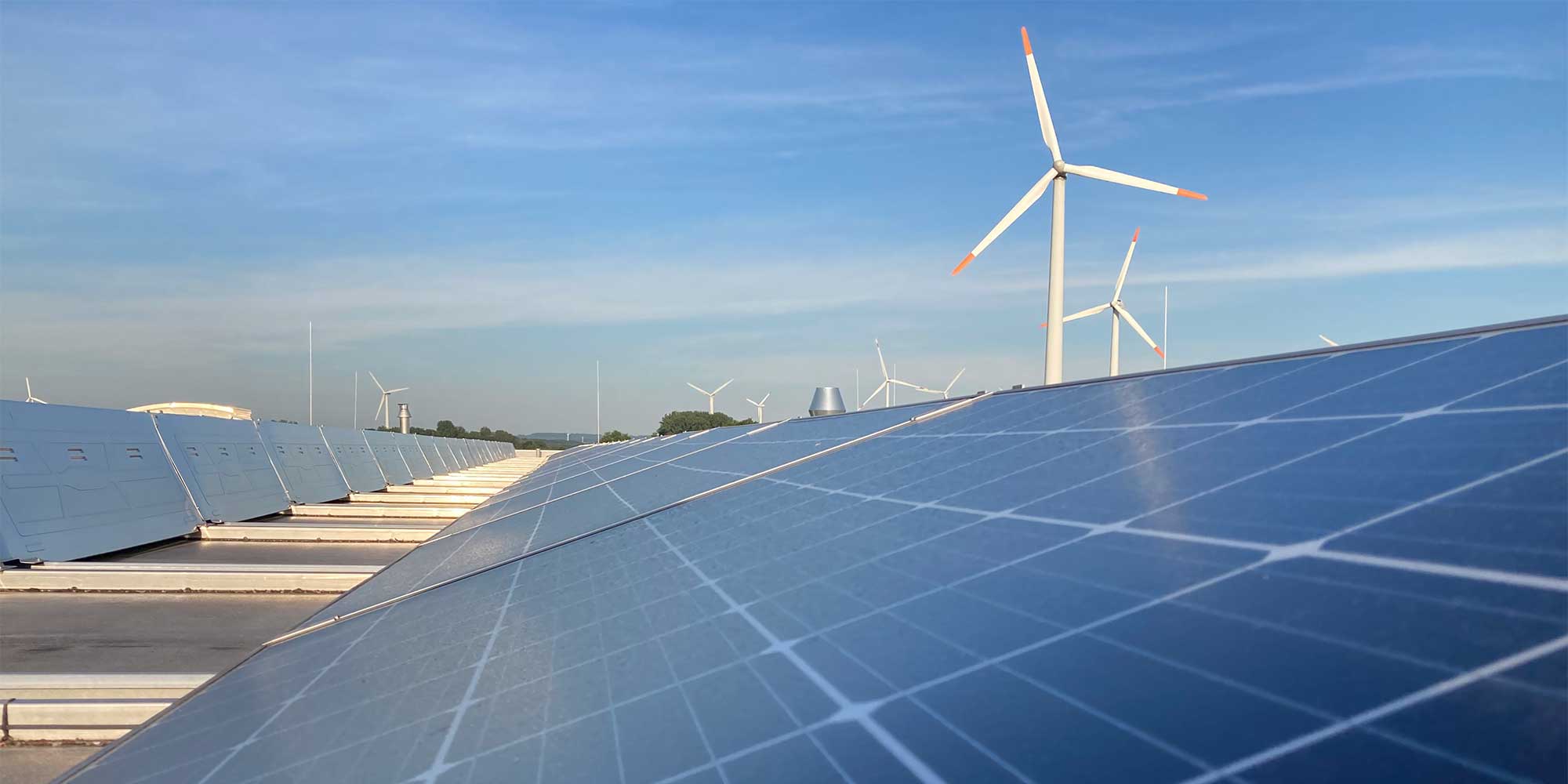This is how logistics and transport become sustainable
Sustainability is no longer a foreign word in transport and logistics. More and more companies are setting themselves the goal of reducing emissions in their supply chain and contributing to climate protection. But how can the transport of goods be made sustainable? What are the challenges in planning and implementation? And what actually characterises sustainable logistics?
What does sustainable logistics mean?
In short: conserving resources – at all levels. The term sustainability originally comes from forestry. Here, sustainable felling of the trees can ensure their continued existence for the future. In logistics, too, it is now important to use existing resources sparingly in order to reduce the ecological footprint. In this context, not only the reduction of CO2 emissions, but also the strengthening of energy efficiency is a top priority. In addition to the generation of sustainable energies, such as solar and wind energy, concepts in transport and in the field of digital technologies offer further significant approaches to solutions.
With digitalisation to more sustainability
Digitalisation is gaining momentum in all industries and is not stopping at logistics. Digital technologies such as artificial intelligence are on the rise and are taking on an ever greater role in everything from organisation to monitoring the flow of goods. But what influence do digital solutions such as big data and automation processes have on the sustainable goals of the logistics industry?
The majority of data that companies store on a daily basis is still collected in analogue form or remains unused in clouds and files. With the help of technological solutions, not only can larger amounts of data be collected, but also analysed. In this way, sustainable decisions can be made and implemented much more quickly and on the basis of up-to-date data. Through electronic transport orders, empty runs can be avoided, among other things. Internet-based planning of loading and unloading helps hauliers combine multiple deliveries, improve loading capacity and reduce loading and unloading times. And through warehouse automation and an increase in energy efficiency, the environmental impact can be reduced many times over. For example, the use of modern lighting technology, storage systems and warehouse management software not only saves costs, but also enables sustainable processes to be implemented.
Reducing emissions in the transport sector
In the EU, transport accounts for a quarter of greenhouse gases and is therefore central to the climate crisis. Overall, greenhouse gas emissions in Germany have decreased by 2019 – but not in transport. Here, emissions have risen by more than 20 per cent since 1995. On this occasion, the Federal Government has enacted a new package of measures to make freight transport more climate-friendly. High CO2 emissions thus mean not only damage to the environment, but also to economic revenues. But what options are there for companies to make transport sustainable?
To realise climate-friendly transport, sustainable supply chains are a key factor. Since a large part of the transport is still done by road, the design of the vehicle fleet also plays a decisive role. The expansion of electric mobility and low-emission trucks can have a positive impact on the environment. With the help of significant improvements in engine technology, today’s trucks are significantly more powerful, consume less fuel and are more environmentally friendly. But especially by shifting freight from road to rail, tonnes of CO2 can be saved. Keyword: intermodal transport. Thus, energy and emissions can be significantly reduced through consolidated partial or complete loads by barge, train and truck.
Sustainable into the future with Wecon
In order to reduce the consumption of fossil raw materials such as diesel and petroleum and to lower CO2 emissions, intermodal transport must be expanded and standing and waiting times for loading and unloading must be shortened. Through high-quality commercial vehicle and container technology, Wecon produces sustainable solutions – for businesses and the environment. In this way, customised swap bodies guarantee a quick change from road to rail, without long vehicle downtimes. By intelligently linking the modes of transport, companies can unerringly integrate resource-saving commercial vehicle concepts into their transport systems. At Wecon, you will find standard and Made to measure products for this purpose, in order to successfully take the first step towards achieving sustainability goals.
Conclusion: Leading companies are taking on an increasingly important role in climate change. It will not be long before sustainability and new technologies are firmly anchored in the logistics industry. After all, automated and digital processes are already part of everyday life in many companies. Important flows of goods must also increasingly move to the rails through combined transport and be supplemented by high-performance, durable and customised hardware. These tasks must be tackled for a resource-saving and secure future.
